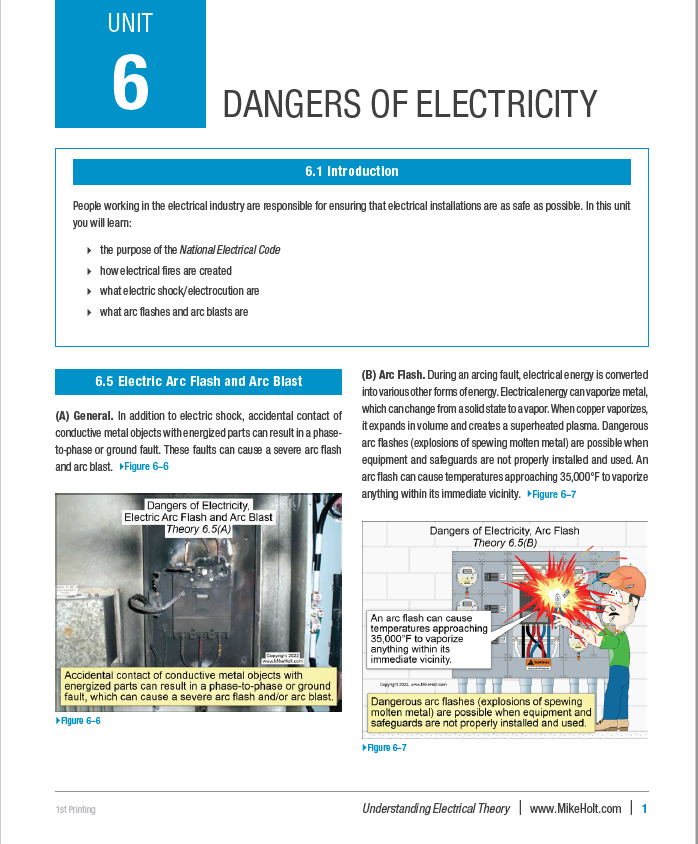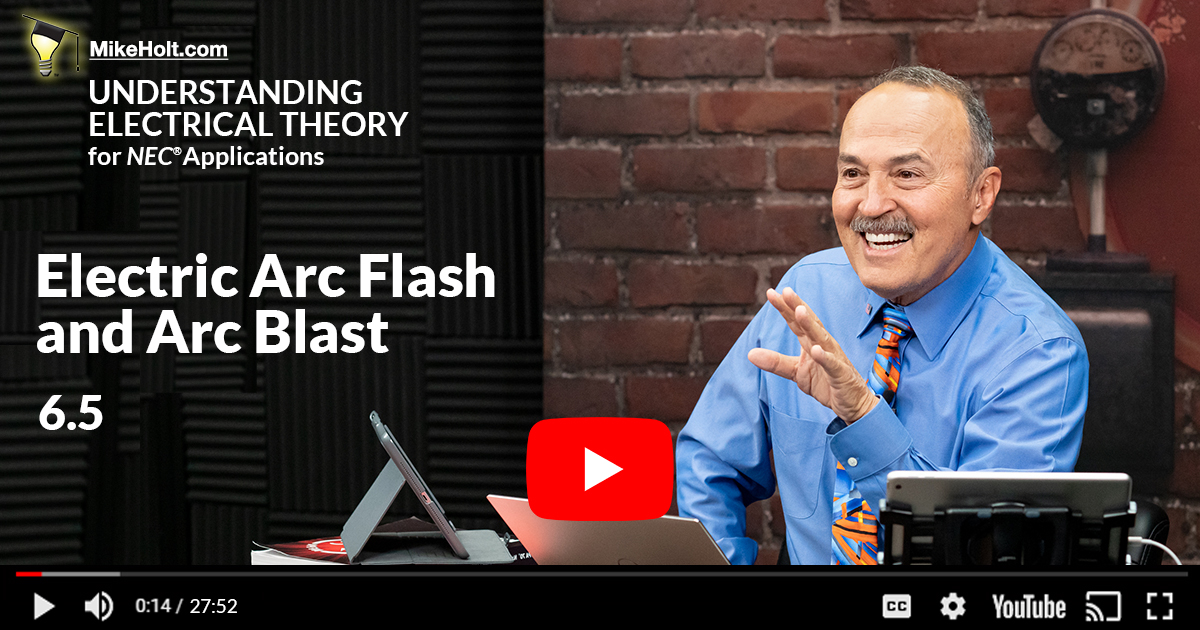|
What a lot of people don't realize is that the foundation for understanding the NEC rules for electrical installations is electrical theory! Whether you're a first-year apprentice still struggling to understand the difference between a volt or ampere, or a veteran electrician trying to sharpen your troubleshooting skills, this product has something for you. We're sharing this clip from the program to introduce you to the importance of this topic. Please feel free to share this with your friends and co-workers, and for more videos and content on this topic, check out our Electrical Theory Video Library that includes the full program and digital textbook.

| Electric Arc Flash and Arc Blast |
The content below is extracted from
Mike Holt's Understanding Electrical Theory textbook, for NEC Applications.
| |

Click here or on the thumbnail to the left to view or download the PDF of this section. (2 pages, 416 KB)
|

|
|
Click on the image above to watch the video
|
A severe shock, arc flash, and/or arc blast that results in injury or death is possible whenever you work on energized electrical equipment. These dangers are best understood if you know electrical theory and the physics behind one of these potential events.
During an arcing fault, metal parts can vaporize and create a superheated plasma (arc flash) and an explosive pressure wave that ejects molten metal (arc blast).To prevent injury, you must de-energize equipment, select the correct personal protective equipment, and use the right material to build the job. But before any of this, you must have an attitude that puts personal safety first by recognizing and avoiding these hazards before there is an injury or loss of life.
Join Mike and the team on this video as they discuss the hazards of arc flashes, arc blasts, and energized work. Click on the image to the right to watch the video and be sure to download the PDF to follow along.
|
|
For more information on this topic, get a copy of Mike Holt's Understanding Electrical Theory video program and textbook.
|
|
|
We'd
love to hear from you about this series, and the ways you're using it.
Send us your comments and feedback by clicking on "Post a Comment"
below. Look out for the next part in this series a month from now, and
please share with your colleagues. |
|
|
|

